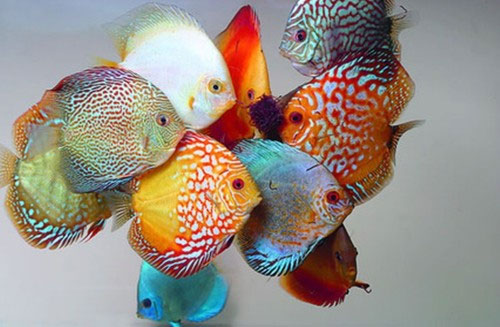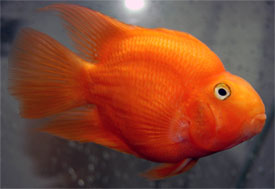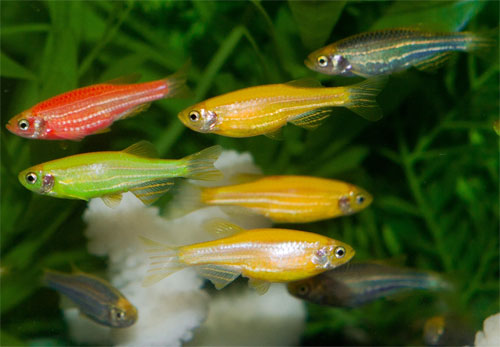As fish have been spawned in aquariums over generations, there has been an understandable tendency to select the most colorful individuals for breeding purposes. For this reason, many of the most popular tropical aquarium fish kept today are more brightly colored than their wild relatives. Modern techniques have allowed the development of varieties to be taken to new extremes, with the first genetically modified fish now available.
The science of genetics is concerned with the way in which characteristics pass from one generation to the next. The characteristics of all living organisms, including fish, are contained in the genes, which are carried on rodlike structures called chromosomes, present within the nucleus of every living cell in the body. Mutations (or unexpected changes) in the genetic structure can occur, and sometimes result in a change to the fish’s physical appearance, such as its color, patterning, or body and fin shape. When mutations occur in certain cells, such as egg or sperm cells, the change is passed to the next generation. Most mutations make only subtle changes, which can be enhanced by selective breeding over many generations. On occasions, however, a mutation that creates a radical change can occur.The golden coloration of the Butterball Angelfish (Pterophyllum sp. var.), for example, resulted from a mutation that caused the loss of a dark pigment that normally masks this yellow shade. Mutations can also be harmful; this is clearly illustrated in very large groups of fry, which may contain a few deformed individuals.

Selective breeding
When a mutation that confers a desirable modification—like a color change—occurs, it must be established in future generations by a careful breeding program.This not only retains the favored characteristic, but also ensures that the new variety does not carry any genetic problems. A common way to do this is outcrossing, which involves pairing the fish with an unrelated individual of the same species that displays normal coloring and patterning.The resulting offspring will be normal in color, but they will carry the mutation for the color change. After further pairings with the progeny of similar matings, a number of the new-colored fish will be present among the offspring.These can be separated out and allowed to mate with each other. Such a breeding program improves the genetic base, ensuring that the resulting individuals are less closely related. Mating together two fish from the same brood—or inbreeding—can result in offspring that produce reduced numbers of fry or are infertile, especially when this is carried out over several generations.
 Hybridization
Hybridization
Under normal circumstances, members of a single species only breed with other individuals from that species. It is sometimes possible, however, to persuade individuals from two different species to pair, creating offspring with novel characteristics.This method for creating new aquarium varieties is controversial, because these fish would never exist in the wild. Hybridization has been used very widely to create variant forms of the popular livebearers, including the wellknown Black Molly, strains of the more colorful gouramis, and the spectacular Parrot Cichlid.
Genetic modification of fish
This new and controversial laboratory method for developing fish with unusual characteristics originated in scientific research. By introducing the luminescence gene from a jellyfish into the genetic makeup of fish (a standard technique used to “visualize” genes), researchers created fish in which every cell in the body emitted a green glow. Rice Fish that carry this jellyfish gene, were developed in Taiwan during 2001 as part of a medical research program, but their commercial potential was quickly realized, and they became the first genetically modified aquarium fish available to hobbyists. More recently, Zebra Danios that carry the jellyfish luminescence gene have been developed at the National University of Singapore as part of a scientific study into detecting environmental pollution. Trademarked as “Glofish,” they first went on sale in pet stores in some parts of the US late in 2003.



